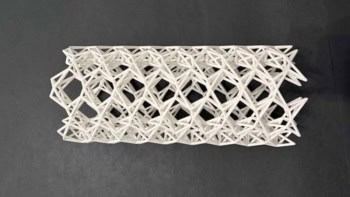A 'nanomotor' based on the spontaneous movement of tin clusters on a copper surface could be the basis for a new generation of nanotechnology according to Andreas Schmid and co-workers at the Sandia National Laboratory in the US. Schmid and colleagues noticed that tin atoms deposited on a copper surface quickly arrange themselves into clumps and propel themselves along using energy generated by a chemical reaction between the tin and copper atoms (A K Schmid et al 2000 Science 290 1561). Finding a way to control the motion will be crucial to the development of molecule-sized motors.
Schmid and colleagues used new microscopy techniques to observe in real time interactions between the tin clusters – each containing hundreds of thousands of atoms – and the copper surface. They found that tin and copper atoms swap places at the interface between the two metals to form bronze. The tin atoms in the cluster strongly repel those already incorporated into the copper. The need to lower the surface free energy drives the tin islands towards fresh patches of copper, leaving ‘snail trails’ of bronze behind them. This two-dimensional alloying process represents a motor because it converts chemical energy into motion.
The motion of clusters on the copper surface is surprisingly complex. Schmid’s team noticed that, far from moving in a random fashion, the clusters tended to follow ordered paths and only crossed old tracks when there was no alternative. The researchers were able to vary the speed of the clusters – which, weight-for-weight, produce about three times more power than a car – by adjusting the temperature. The clusters gradually shrink and disappear when all of the tin has dissolved into the copper.
Tin is usually reluctant to dissolve into copper because its atoms are much bigger. Schmid and colleagues overcame this problem by using a copper crystal cleaved along the plane containing most defects – which accommodates the tin atoms more easily. Two-dimensional alloying also takes place much more readily than alloying in bulk materials.
The phenomenon is a nanoscale version of one first seen by Lord Rayleigh in the 19th century. Rayleigh determined the surface tension of water by observing the motion of camphor particles across water driven by the surface free energy.



